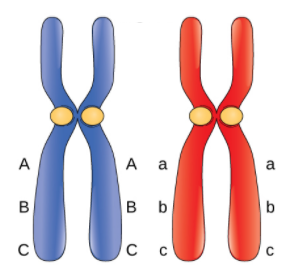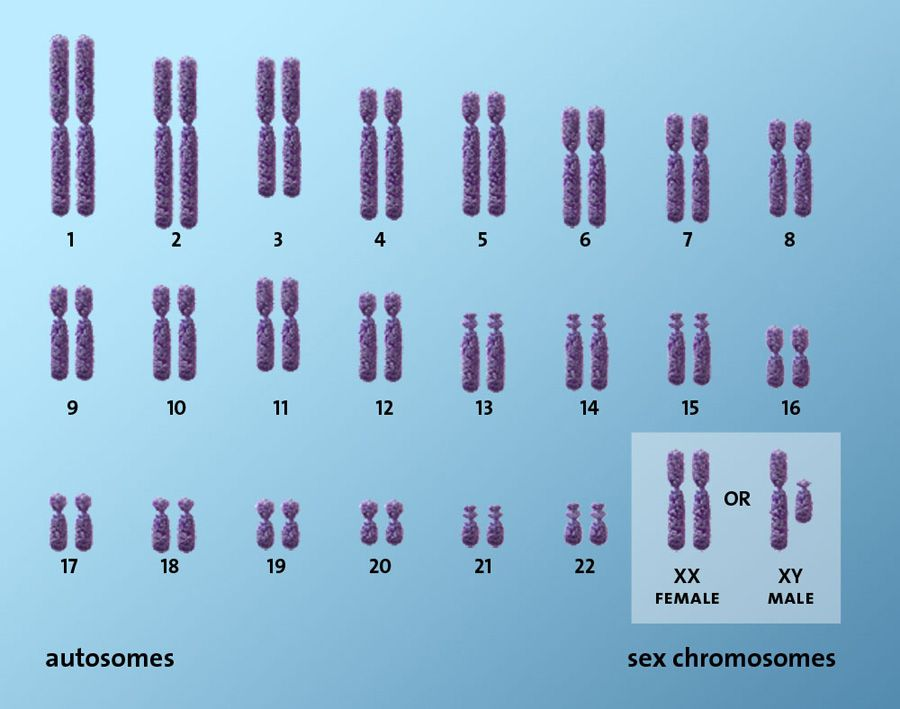
How many pairs of chromosomes are present in human beings?
Answer
503.1k+ views
Hint: Chromosomes are thread-like structures located inside the nucleus of animal and plant cells.
Complete Answer:
When you look at yourself in mirrors, to groom yourself, to give a good hairstyle, what you see is the expression of the genes that your parents have gifted you! These genes are just not giving you the attractive features, in fact all the metabolic activities and structural aspects of your body are defined by the genes.
Now, these genes are basically nothing but the segments of DNA, our genetic material. These segments of DNA that code for a protein, which can be a hormone, an enzyme, a structural protein, are called genes. Genes also code for RNA in our cells, that perform a variety of metabolic functions.
Now, the thing is that these genes are present in DNA as a stretch of nucleotide. But where is DNA present? DNA is located inside the nucleus (in case of eukaryotic cells), where it is packed with proteins to form the chromatin network. This chromatic network is condensed and packed during the cell division and are called chromosomes.

So chromosomes are basically the vehicles carrying DNA from parents to offspring! Now different organisms have different numbers of chromosomes. In human beings have 44 autosomes and 2 sex chromosomes, present in pairs. In an individual, half of the chromosomes are received from the mother via the ovum and the other half is received from father via the sperm. After fertilization, these chromosomes pair based on homology of genes, and are called homologous chromosomes. So, a pair of homologous is made up of the same type of genes, although alleles might differ.

Human beings have 44 autosomes and 2 sex chromosomes, present in pairs.
Note: The sex chromosomes decide the sex of an individual. If it’s XY, the individual is male and if it’s XX, the individual is a female. The autosomes perform the other somatic functions of the body.
Complete Answer:
When you look at yourself in mirrors, to groom yourself, to give a good hairstyle, what you see is the expression of the genes that your parents have gifted you! These genes are just not giving you the attractive features, in fact all the metabolic activities and structural aspects of your body are defined by the genes.
Now, these genes are basically nothing but the segments of DNA, our genetic material. These segments of DNA that code for a protein, which can be a hormone, an enzyme, a structural protein, are called genes. Genes also code for RNA in our cells, that perform a variety of metabolic functions.
Now, the thing is that these genes are present in DNA as a stretch of nucleotide. But where is DNA present? DNA is located inside the nucleus (in case of eukaryotic cells), where it is packed with proteins to form the chromatin network. This chromatic network is condensed and packed during the cell division and are called chromosomes.

So chromosomes are basically the vehicles carrying DNA from parents to offspring! Now different organisms have different numbers of chromosomes. In human beings have 44 autosomes and 2 sex chromosomes, present in pairs. In an individual, half of the chromosomes are received from the mother via the ovum and the other half is received from father via the sperm. After fertilization, these chromosomes pair based on homology of genes, and are called homologous chromosomes. So, a pair of homologous is made up of the same type of genes, although alleles might differ.

Human beings have 44 autosomes and 2 sex chromosomes, present in pairs.
Note: The sex chromosomes decide the sex of an individual. If it’s XY, the individual is male and if it’s XX, the individual is a female. The autosomes perform the other somatic functions of the body.
Recently Updated Pages
Master Class 9 General Knowledge: Engaging Questions & Answers for Success

Master Class 9 English: Engaging Questions & Answers for Success

Master Class 9 Science: Engaging Questions & Answers for Success

Master Class 9 Social Science: Engaging Questions & Answers for Success

Master Class 9 Maths: Engaging Questions & Answers for Success

Class 9 Question and Answer - Your Ultimate Solutions Guide

Trending doubts
Give 10 examples of unisexual and bisexual flowers

Draw a labelled sketch of the human eye class 12 physics CBSE

Differentiate between homogeneous and heterogeneous class 12 chemistry CBSE

Differentiate between insitu conservation and exsitu class 12 biology CBSE

What are the major means of transport Explain each class 12 social science CBSE

Why is the cell called the structural and functional class 12 biology CBSE




